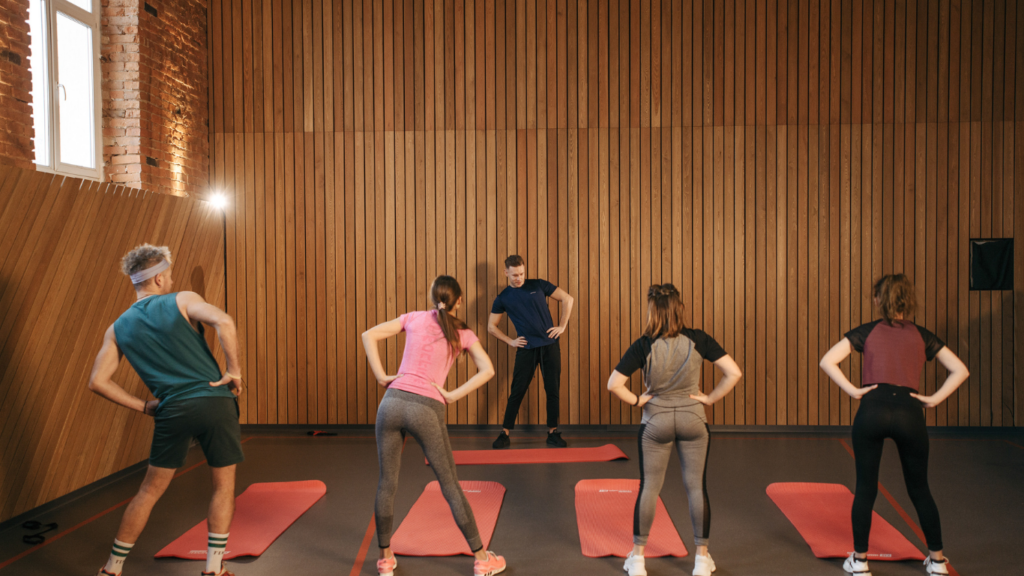As someone passionate about fitness and well-being, I’ve learned firsthand the critical role proper form plays in preventing exercise-related injuries. In the world of fitness, mastering the correct techniques isn’t just about aesthetics; it’s about safeguarding your body from harm.
Whether you’re a seasoned gym enthusiast or a beginner looking to kickstart your fitness journey, understanding the significance of maintaining proper form is paramount. In this article, I’ll delve into the importance of executing exercises with precision and share valuable insights on how you can sidestep common workout mishaps.
By honing in on the nuances of form, you’ll not only enhance the effectiveness of your workouts but also reduce the risk of strains, sprains, and other injuries. So, let’s explore the essential principles of proper form together and pave the way for a safer, more rewarding fitness experience.
Understanding the Importance of Proper Form in Exercise
Exploring the significance of maintaining proper form during exercise is crucial for injury prevention and optimizing workout effectiveness. As someone deeply immersed in the realm of fitness, I am keen on highlighting the essential role that correct form plays in ensuring a safe and productive fitness journey for individuals of all experience levels.
Focusing on executing exercises with precision not only enhances the benefits of each movement but also significantly reduces the likelihood of sustaining common injuries like strains and sprains. By delving into the fundamental principles of proper form, individuals can cultivate a solid foundation for their fitness endeavors, leading to better results and overall well-being.
Common Exercise Injuries Caused by Incorrect Form
When it comes to exercise injuries, proper form plays a crucial role in preventing common issues that may arise. Below are some of the most prevalent injuries caused by incorrect form during workouts:
Types of Injuries
- Strains: Incorrect form while lifting weights or performing movements can lead to muscle strains, where the muscle fibers are overstretched or torn. This often occurs when the weight is too heavy, or the movement is done with improper posture.
- Sprains: Sprains commonly happen when ligaments are stretched beyond their limits due to poor form. Twisting or landing incorrectly during exercises can result in sprains, causing pain and reduced range of motion.
- Tendonitis: Incorrect form can put undue stress on tendons, leading to inflammation and irritation. Tendonitis often occurs in areas such as the elbows, shoulders, or knees and can be exacerbated by repetitive movements performed incorrectly.
Impact on Muscle Groups
Improper form not only increases the risk of injury but also impacts different muscle groups in varied ways:
- Muscle Imbalances: Incorrect form can lead to muscle imbalances, where certain muscles become stronger while others weaken. This imbalance can affect posture, movement efficiency, and overall performance during exercises.
- Overuse Injuries: Using incorrect form repeatedly can result in overuse injuries in muscles and joints. The increased stress from improper movements can cause wear and tear, leading to conditions like tendonitis or bursitis.
- Reduced Muscle Activation: Poor form may prevent muscles from being properly activated during exercises, limiting their growth and strength development. This can hinder progress and make it challenging to achieve fitness goals effectively.
By understanding the types of injuries and the impact incorrect form can have on muscle groups, individuals can prioritize proper technique during their workouts to reduce the risk of injuries and maximize the effectiveness of their fitness routine.
Techniques to Ensure Proper Form
I’ll delve into essential techniques to maintain proper form during workouts to reduce the risk of injuries and maximize exercise benefits.
Body Alignment and Posture
I’ll describe the significance of maintaining correct body alignment and posture during exercises to prevent strain and injury.
Benefits of Maintaining Correct Form
Ensuring proper form during exercises offers a multitude of benefits that can enhance your fitness journey. Here are the key advantages of maintaining correct form:
- Injury Prevention: Executing movements with the right form significantly reduces the risk of common exercise-related injuries. By aligning your body correctly, you can avoid strains, sprains, and other discomforts that may sideline your workout routine.
- Muscle Engagement: Proper form maximizes muscle activation during workouts. When you perform exercises correctly, you target the intended muscle groups more effectively, leading to better results and muscle development.
- Efficiency: Correct form improves the efficiency of your workouts. By moving with precision, you ensure that each repetition counts, optimizing the impact of your training sessions and helping you reach your fitness goals faster.
- Posture and Alignment: Maintaining proper form promotes good posture and alignment. This not only reduces the risk of injuries but also contributes to overall body awareness and balance, enhancing your performance in various exercises.
- Long-Term Progress: Consistently practicing proper form establishes a strong foundation for long-term progress. By prioritizing form over weight or speed, you build sustainable strength, endurance, and stability, essential for continuous improvement in your fitness journey.
By recognizing and embracing the benefits of maintaining correct form in your workouts, you can safeguard your well-being, optimize your performance, and unlock the full potential of your fitness efforts.


 Dawnny Armstrongster, the visionary founder of Toe Back Fitness, is a passionate advocate for health and wellness, driven by a mission to empower individuals to lead active, balanced lives. With a deep understanding of fitness and injury prevention, Armstrongster has cultivated a platform that merges expert insights with practical advice, making fitness accessible to people at all levels. Her commitment to promoting sustainable lifestyle habits and safe workout practices reflects her dedication to long-term well-being. Under her leadership, Toe Back Fitness has become a trusted resource for those seeking to enhance their physical health, choose the right gear, and build routines that align with their fitness goals.
Dawnny Armstrongster, the visionary founder of Toe Back Fitness, is a passionate advocate for health and wellness, driven by a mission to empower individuals to lead active, balanced lives. With a deep understanding of fitness and injury prevention, Armstrongster has cultivated a platform that merges expert insights with practical advice, making fitness accessible to people at all levels. Her commitment to promoting sustainable lifestyle habits and safe workout practices reflects her dedication to long-term well-being. Under her leadership, Toe Back Fitness has become a trusted resource for those seeking to enhance their physical health, choose the right gear, and build routines that align with their fitness goals.